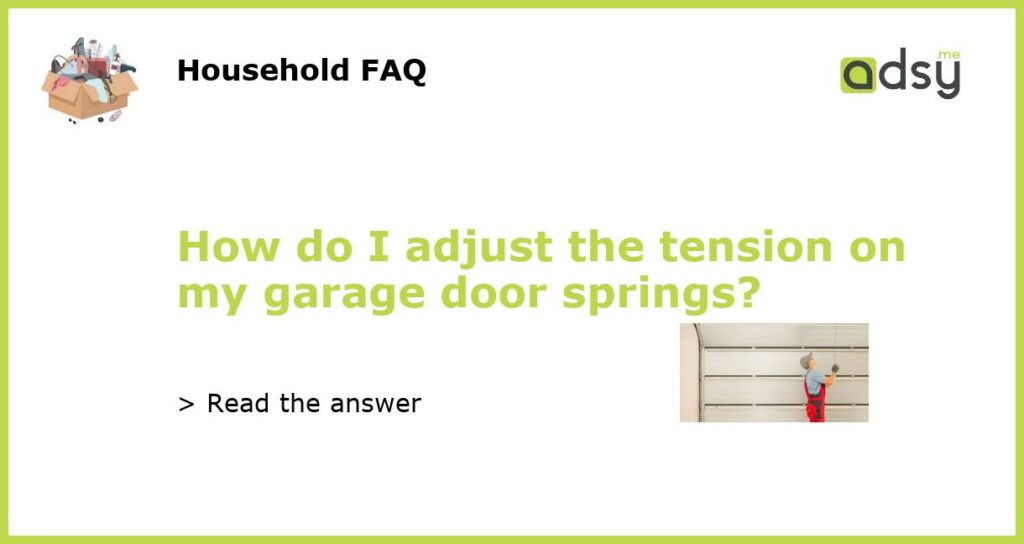Understanding Garage Door Springs
Garage door springs are an essential component of the door’s mechanism, as they help in the opening and closing process. There are two main types of garage door springs: torsion springs and extension springs. Torsion springs are located above the door, while extension springs are located on either side of the door. These springs are under significant tension and can be dangerous if not handled properly.
Why Adjusting Tension is Necessary
Over time, the tension in garage door springs can become imbalanced, causing the door to function improperly. If the tension is too loose, the door may not fully close or may not stay closed. On the other hand, if the tension is too tight, the door may have difficulty opening or may slam shut unexpectedly. Properly adjusting the tension of the springs can not only improve the functionality of the door but also extend the lifespan of the springs.
Steps to Adjust Tension on Torsion Springs
Adjusting the tension on torsion springs should only be done by a trained professional due to the high level of risk involved. However, it’s important to understand the basic steps involved in the process:
- Ensure the door is closed and secure it in place.
- Identify the winding cone at the end of the spring.
- Use winding bars to loosen or tighten the tension by turning the cone.
- Test the tension by manually opening and closing the door.
- Make further adjustments if necessary.
Remember, it’s highly recommended to seek professional assistance for torsion spring adjustments to ensure safety and prevent accidents.
Steps to Adjust Tension on Extension Springs
Adjusting the tension on extension springs is generally considered safer than torsion springs but still requires caution. Here are the steps to adjust the tension on extension springs:
- Pull the emergency release handle to disconnect the garage door opener.
- Carefully open the door to relieve tension from the springs.
- Identify the locking pliers and place them on the track below the bottom roller.
- Locate the adjustment clips on the side of the springs and move them to increase or decrease tension.
- Test the tension by manually opening and closing the door.
It’s important to note that extension springs have more tension when the door is closed, so adjustments should be made with caution. If you’re unsure about the process or encounter any difficulties, it’s best to consult a professional for assistance.
Adjusting the tension on your garage door springs is an important maintenance task that can improve the functionality and lifespan of your garage door. While some adjustments can be done by homeowners, it’s crucial to prioritize safety and consult a professional when dealing with torsion springs. Remember to regularly inspect and maintain your garage door springs to ensure they’re in optimal condition, and never hesitate to seek professional help when needed.

